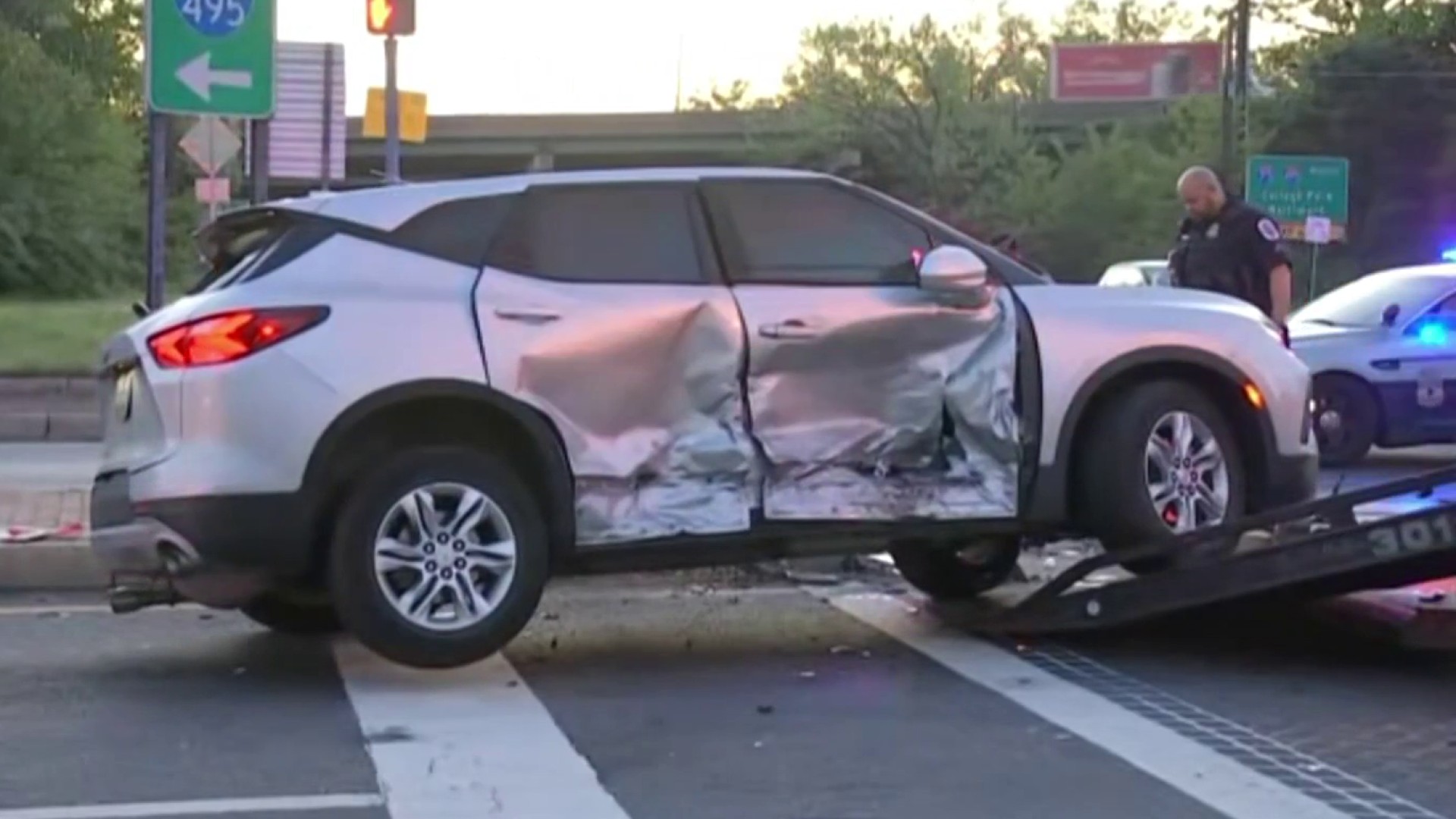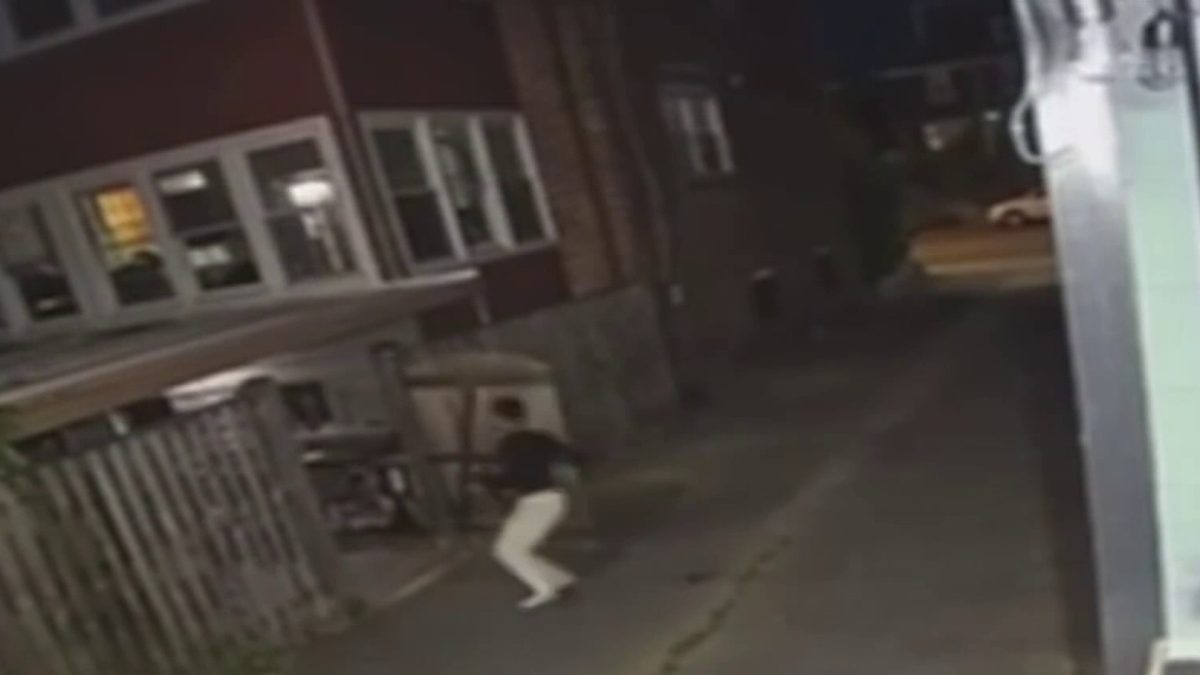Harry Jaffe, a longtime chronicler of the people and politics of Washington, D.C., writes an occasional column for NBC Washington's First Read DMV blog.
Three days after police found Seth Rich suffering from gunshot wounds at a corner in D.C.'s Bloomingdale neighborhood, a wilted bouquet marked the spot. That and an police scout car parked across thesa street were the only indication that another innocent Washingtonian had been gunned down on his way home in the nation’s capital.
Rich, 27 and a rising star with the Democratic National Committee, was D.C.’s 68th homicide for 2016.
Monday night, a week after the murder, police told a community meeting they had no leads. Neighbors had more than a few.
“Five armed robberies in the same few blocks, all with a silver pistol,” one told me before the meeting.
“There’s a crew that hangs out down the street at First and U, selling drugs and threatening people,” says another. “Cops will not shut them down.”
One resident said: “One of the robbers has ordered victims to go into the cloud and discharge the tracking of the phone. Very savvy.”
Local
Washington, D.C., Maryland and Virginia local news, events and information
And very brazen.
The senseless murder of Seth Rich, which police are investigating as a robbery gone bad, puts into harsh light the colliding demands of policing in these times: Can police keep the peace in our still-dangerous streets without using excessive force against law-abiding people? In the case of Philando Castile in Minneapolis, that meant not shooting and killing him for apparently little reason. Here in Bloomingdale and other D.C. neighborhoods where crime is on the rise, that means catching killers loose in the streets.
Violent crime is up slightly, by 1 percent, in the District from a year ago, according to police data. An analysis by the Washington Post found armed robberies are up 20 percent. And last November a poll found crime was residents' number-one concern.
Washington, D.C. is perhaps the most-policed city in the nation. There are at least 25 armed police agencies in and around the city, including officers for the FBI, Metro, Amtrak, Housing, Secret Service and, of course, the U.S. Mint. D.C.'s Metropolitan Police Department is the largest, followed by the Capitol Police and the U.S. Park Police. It can seem as if we live in an armed camp.
Can police in the capital city show up in the next viral video of cops manhandling or shooting someone for questionable reasons? Of course. Remember Miriam Carey, the unarmed mother shot and killed by Capitol Police October, 2013, for driving erratically between the White House and the Capitol? Her family has filed a wrongful death suit against the government.
In February a D.C. cop shot and killed a man in Clay Terrace when he reached for a weapon that turned out to be a BB gun. On June 28 police were called to Varnum Street in Northeast where a man was holding a gun. They pleaded with him to drop it. When he raised it they shot and killed him. It, too, turned out to be a BB gun.
D.C. police said officers in both incidents were cleared and returned to duty.
Still, the chances of an incident similar to the shooting of Michael Brown in Ferguson, Missouri, or Alton Sterling in Baton Rouge or Castile in Minnesota, happening here are slim. Based on my three decades covering the MPD, I believe we have a well-trained force where rules and regulations on the use of force are drilled into every street cop. The same holds true for nearby police departments in Maryland and Virginia. Arlington police are top notch. Prince George's County cops are well-trained. Same high standards hold true for Montgomery County.
If anything, police in D.C. are over-watched and ultra-disciplined. In 1990, following reports of excessive police shootings, then-Chief Charles Ramsey invited the Justice Department to establish a system to govern MPD use of force. Since then every time an officer applies force on duty — even roughly handcuffing a suspect — he or she must file a use of force report. Any slight violation of regulations can trigger discipline, from unpaid leave to termination.
With that punitive system hanging over their heads, many D.C. cops are wary about using force at all. They are less willing to exercise their police powers. Law enforcement specialists call the effect "de-policing," in which cops avoid taking action rather than face discipline for overusing force. FBI Director James Comey mentioned in May that the "viral video effect" from the Ferguson shooting might be discouraging cops from active police work. That’s de-policing, and it’s been a factor here for years.
DC police declined to respond to questions about de-policing. But veteran officer Russell Mullins, executive steward with the union, notes a change in cops on the street, especially among younger officers.
"I don't think it's reluctance," he said. "It's apprehension, not apprehension of being on TV but apprehension of doing the job. We can give recruits a gun and a uniform and teach them the skills, but we can’t give them the heart to do the job.
"You have to be authoritative, physically and verbally,” he said. "Policing is a contact sport."
Mullins along with other officers and residents also decry Chief Lanier’s decision to disband plainclothes vice units. They used to provide crucial intelligence about crimes likely to happen and likely suspects. They are now in a centralized unit.
Which brings us back to Bloomingdale and the sad tale of Seth Rich. Asked at Monday night’s community meeting why no plainclothes officers were deployed despite repeated requests, Commander William Fitzgerald said: "I don't have any access to plainclothes officers."
Seth Rich, a Nebraska native, moved to Bloomingdale two years ago and lived in a group house on First Street. He loved D.C. and his work for the DNC. Bloomingdale is in transition. Four-story brick homes that were crack houses six years ago now sell for $1.4 million. Moms walk dogs and push baby carriages up Flagler Place, where Rich was murdered. Bad things can happen after dark. Rich was walking home, perhaps from the Red Hen or Showtime Lounge around the corner. He didn’t make it. He was reportedly on the phone with his girlfriend when he was accosted and shot.
The challenge for D.C. police is not to avoid showing up in the next viral video. It’s aggressively policing neighborhoods like Bloomingdale and Eckington, Congress Heights and Clay Terrace, Chevy Chase and Georgetown.
At the corner of 2nd and Flagler, across from the Flagler Market, I talked to the two officers set up on the curb. Violence against cops was on their minds after an ex-military man, disturbed by police shooting black men, shot five officers in Dallas. Were they concerned?
“Inherent danger of the job,” one told me.
The essence of the job is still keeping the peace on the streets. In Bloomingdale and many parts of D.C., that peace has been shattered, not by aggressive cops but by the lack of them.



